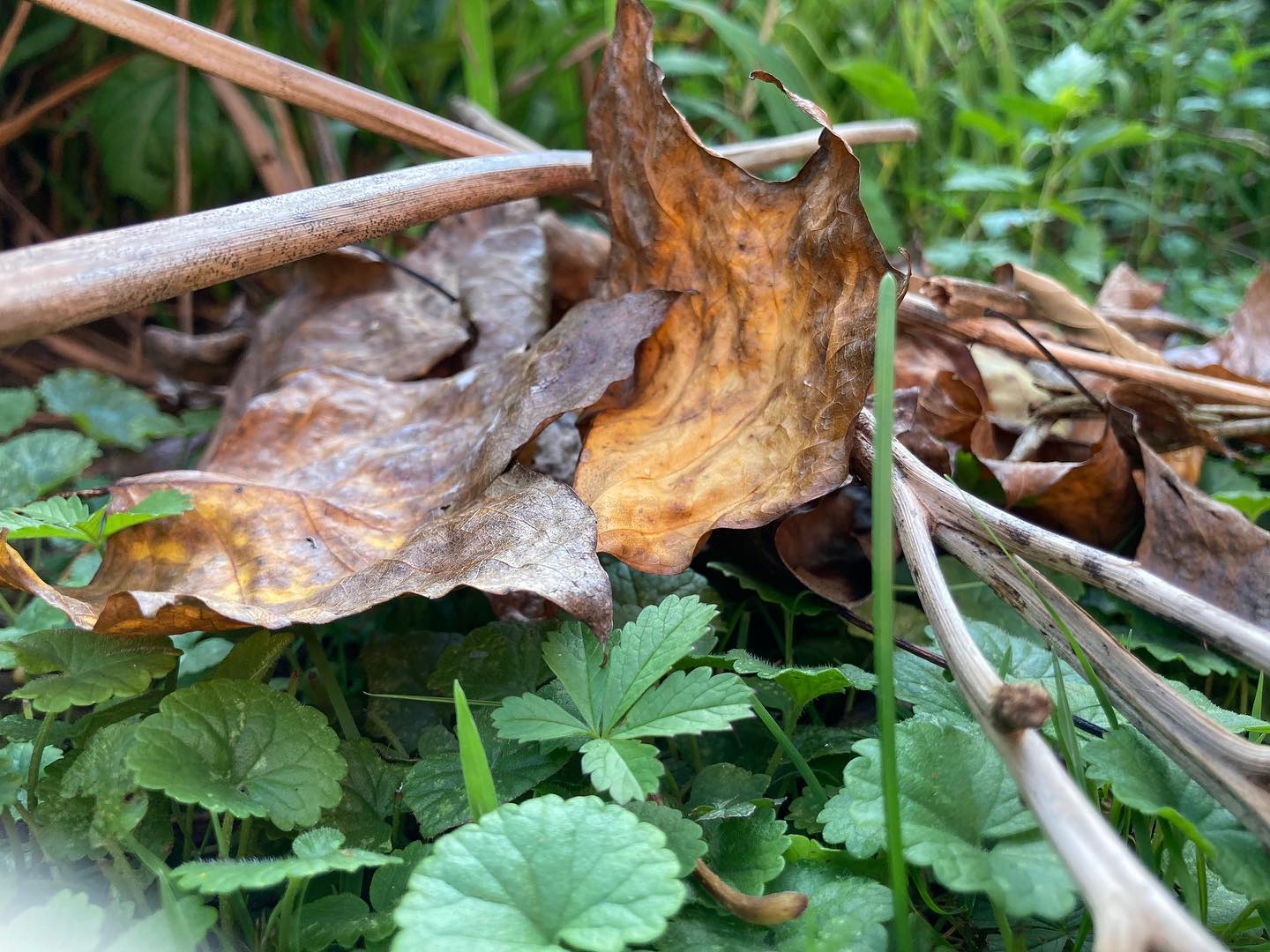Autumn officially begins on Saturday, but we know leaves have been falling for the past few weeks. It’s a beautiful and nostalgic time of year, marked by the vibrant colors and crispness in the air. As we witness this natural phenomenon, it’s fascinating to delve into the unique and often overlooked aspects of leaf litter and its contribution to backyard ecosystems.
Did you know that leaf litter plays a significant role in the success of various plants and animals? It’s not just a mess to be bagged up and discarded on the curb. Leaving leaves on the ground can benefit the biodiversity in your backyard.
Picture yourself the size of an ant, exploring the world beneath those fallen leaves. It’s a bustling kingdom teeming with life and activity. Fungi, plant spores, snails, worms, and cocoons create a microcosm of delicate balance and interdependence. These tiny organisms rely on the nourishment and shelter provided by the leaf litter, creating a thriving ecosystem right at our feet.
But what about the leaves in your garden beds and around your trees? Shouldn’t they be cleared away? Surprisingly, the answer is no. Leaving the leaves in these areas can benefit your plants by providing insulation. As the weather turns colder, the leaf litter acts as a natural barrier, helping to regulate soil temperature and protect delicate roots from frost. It’s like providing free mulch for your plants!
As we transition into winter, the actions we take now will provide benefits that extend beyond the changing seasons. Let’s dive deeper into the fascinating world of leaf litter and explore how it contributes to the intricate web of life in our gardens and yards.
1. Leaf Litter: A Haven for Small Creatures
A diverse community of insects, spiders, and other invertebrates find refuge under those fallen leaves. The leaf litter protects from predators, extreme temperatures, and desiccation. It’s like a cozy blanket, shielding these tiny creatures from the world’s harsh realities. By leaving the leaf litter undisturbed, we create a haven for these beneficial and often overlooked organisms.
2. Nutrient Cycling: Nature’s Recycling System
Leaves may seem dead and lifeless once they fall, but they play a crucial role in nutrient cycling. As the leaves decompose, they release valuable nutrients back into the soil. Microorganisms, bacteria, and fungi break down the leaves, converting them into organic matter that feeds the surrounding plants. It’s nature’s way of recycling, ensuring that resources are not wasted but reused in the endless cycle of life.
3. Habitat and Camouflage
For many creatures, fallen leaves provide the perfect habitat and camouflage. Insects, amphibians, and reptiles rely on leaf litter to hide from predators, lay their eggs, and even hibernate during the colder months. Many species of birds and foraging mammals sift through the leaf litter in search of food and nesting materials. By preserving this natural layer of protection, we create a welcoming environment for wildlife.
4. Moisture Retention and Erosion Control
Another important function of leaf litter is retaining moisture and controlling erosion. The presence of fallen leaves helps to prevent soil erosion caused by heavy rainfall, keeping the topsoil intact and protecting the delicate root systems of plants. This moisture retention is especially crucial when water availability is scarce during dry spells. Maintaining the leaf litter ensures a more sustainable and resilient ecosystem in our backyard.
5. A Lesson from Nature: Embracing Imperfection
Leaves may not be neatly arranged or perfectly manicured, but that’s part of their charm. Embracing the beauty of leaf litter reminds us to appreciate the imperfections and intricate details of the natural world. It teaches us that there is beauty even in decay and that every component, no matter how small, has a purpose and adds value to the ecosystem.
So, as autumn settles in and the leaves continue to fall, consider leaf litter’s unique and fascinating aspects. Let’s resist the urge to bag up and discard these natural treasures. Instead, move the leaves to your garden beds and around your trees, where they can provide insulation and nourishment for your plants. By embracing the beauty and significance of leaf litter, we become stewards of our backyard ecosystems, fostering biodiversity and harmony in nature’s delicate tapestry.
For more information on the benefits of leaf litter and how it contributes to a thriving backyard ecosystem, check out the National Wildlife Federation’s article [LINK IN BIO]. Together, let’s celebrate the wonders of autumn and the often-overlooked magic of the fallen leaves. 🍂🍁🐜🌳🌱
*****
Source Description
Autumn officially begins on Saturday, but we know leaves have been falling for the past few weeks. 🍂
Did you know they play a significant role in backyard ecosystems, though?
Leaf litter contributes to the success of various plants and animals and should be left on the ground, not bagged up on the curb. 🍁
Picture yourself the size of an ant- what a world to see under those leaves! 🐜 Fungi, plant spores, snails, worms, and cocoons oh my! 🐌🪱
Move leaves to your garden beds and around trees, and they’ll pull double duty by insulating your plants. Free mulch! 🌳
This NWF article explains how your actions now will also benefit you in winter. LINK IN BIO

